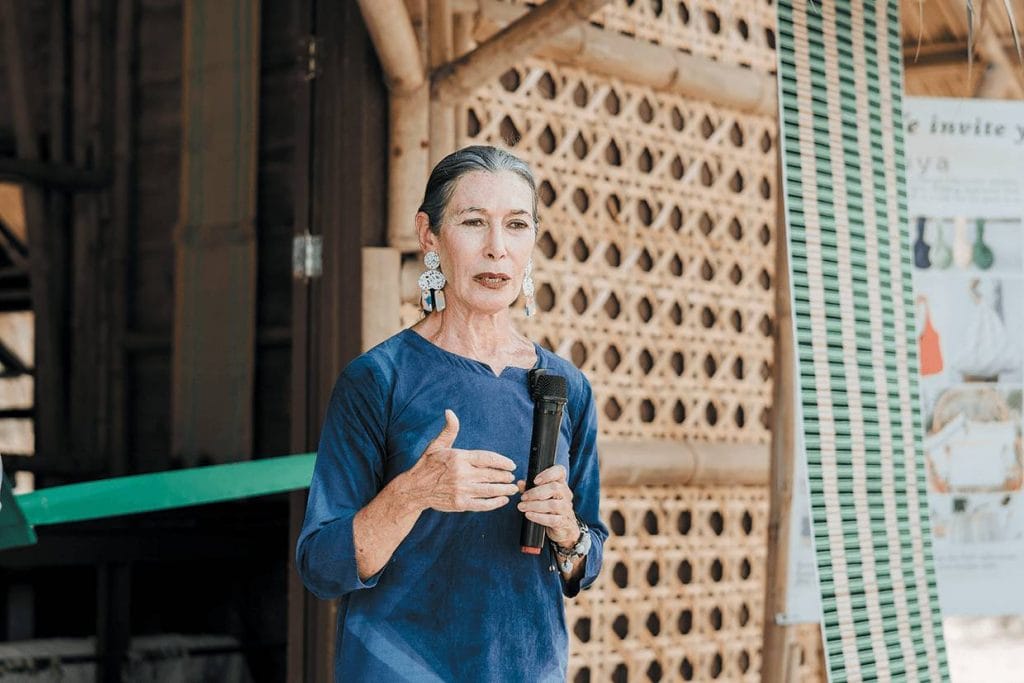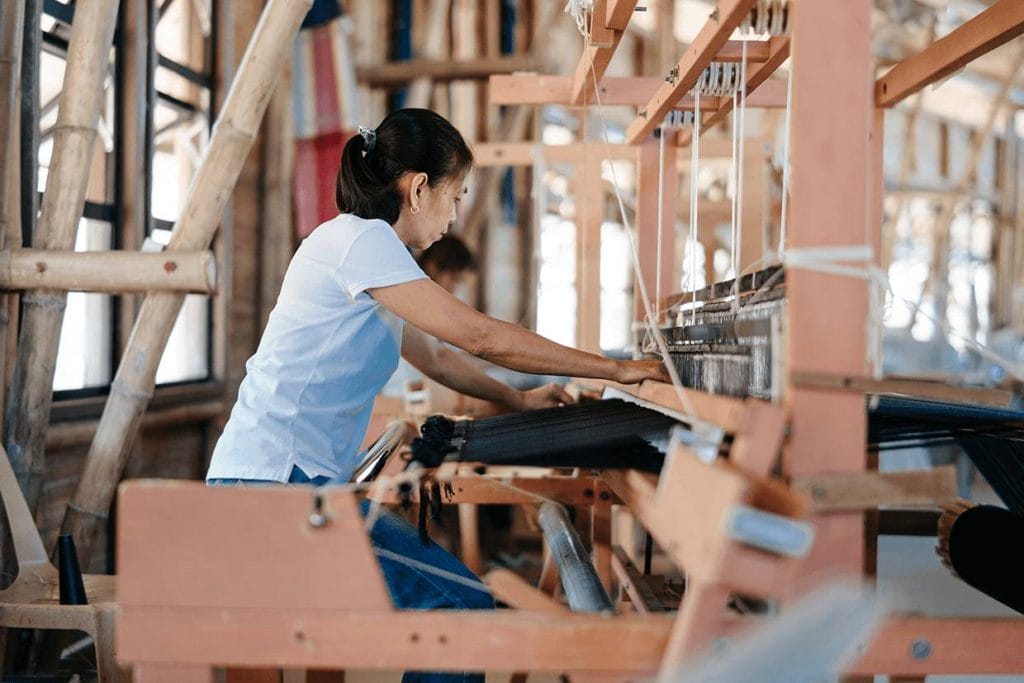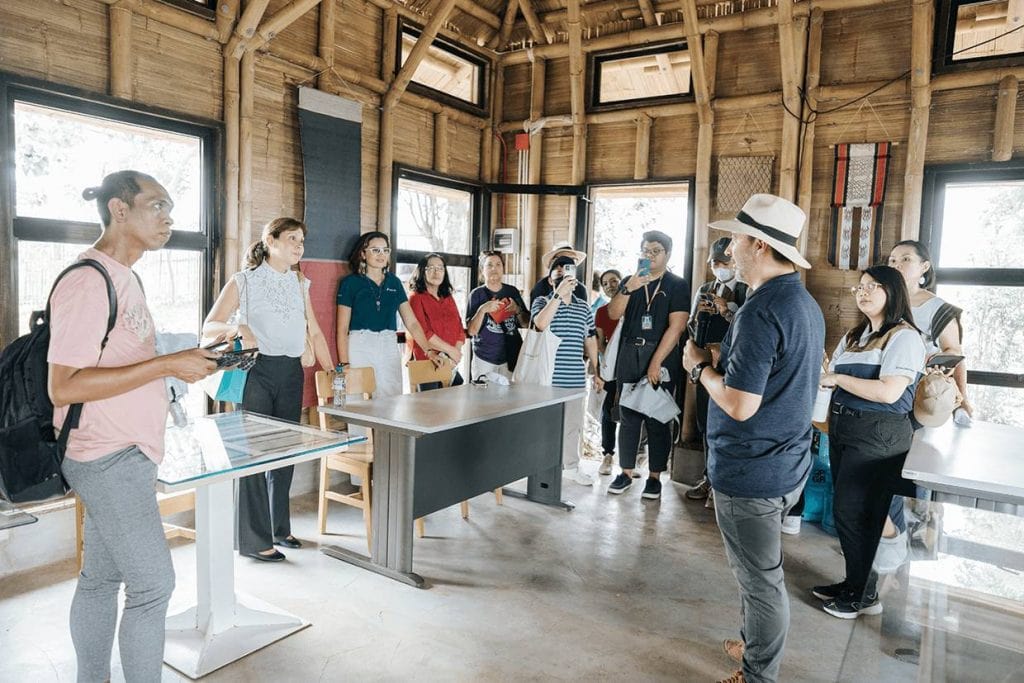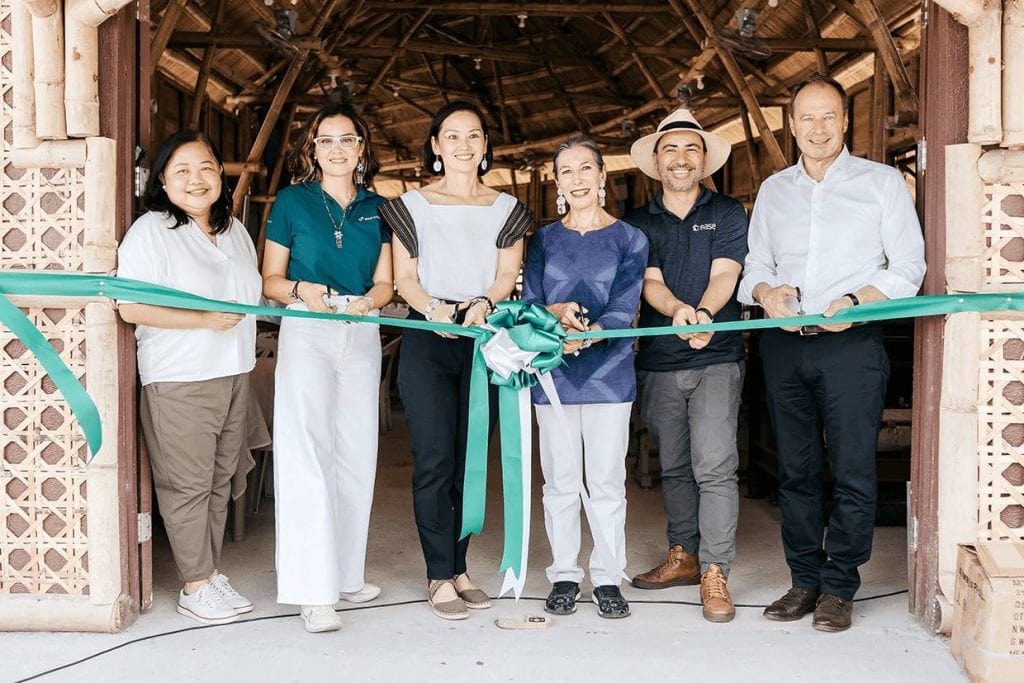Growing up surrounded by sugarcane fields in rural Batangas left Bea Roxas with a deep connection to the land and the workers that till it.
The crop provided Roxas and her family with their needs throughout the years. This inspired the purpose-driven Spaniard to return to her roots in 2014 after a couple of years in Spain, and build something that showcases authentic local products, while providing livelihood to local communities.
“In the Philippines, we have pineapple and banana fibers, so why not sugarcane?” she asked herself, thinking of how she can give back to the Filipino people. “I, then, prepared a project to see how we can achieve that goal.”
In 2015, through the Roxas Foundation, Inc., Roxas was awarded a three-year grant by the United States Agency for International Development (USAID) to help fund a pioneering technology that will extract sugarcane fiber, called “bagasse,” and convert it into more useful threads.

Bagasse, for example, can be woven into textile, the process of which she learned more about from Silk Cocoon founder Jean Goulbourn.
Through the help of USAID and Goulbourn, Roxas was able to conceptualize and construct the 148-sq.m. Kanya Kawayan Weaving Center, located in Brgy. Reparo, Nasugbu, Batangas. Nicknamed “Kanya,” the social enterprise provides a source of livelihood for the local women by allowing them to produce fabrics woven from sugarcane fibers that are then made into accessories and homeware.
“Here we are today as a proud owner of the beautiful Kanya Kawayan Weaving Center for the community of Reparo. I’m glad to have partners like you who believe in what we’re doing to uplift the lives of the people,” the president of the social enterprise said in her opening remarks during the weaving center’s turnover ceremony in March 24.
Roxas, along with partners Holcim Philippines, Inc. and the Hilti Foundation’s Base Bahay Foundation, Inc. (BASE), led the opening of the facility and toured special guests and members of the press around the area.

‘Repairing’ the community
The philanthropist, then, shared why she chose Brgy. Reparo in Nasugbu as the beneficiary of the Kanya Kawayan Weaving Center: “Reparo in Spanish means “to repair.” I said this is a good chance to repair, uplift the community,” she explained.
Construction for the Kanya Kawayan Weaving Center began when she met engineer Luis Lopez, BASE’s head of technology, with whom she shares a love for bamboo.
“With him, I met the other officials of BASE and we continued our project in 2019. That was when we built our bamboo treatment facility, which was the first structure that we did in this whole property,” she recalled.

With a treatment facility in place, the Kanya Kawayan Weaving Center was built, boasting a unique design that utilizes BASE’s Cement Bamboo Frame Technology (CBFT), a prefabricated frame system using load-bearing bamboo with metal connections and mortar cement plaster.
The system has been tested for resistance against natural calamities like earthquakes and typhoons, even fires and insect infestations. More importantly, CBFT helps in Kanya Kawayan’s goal of sustainability as it has 60 percent less carbon footprint compared to usual structural materials.
The construction and mission of the Kanya Kawayan Weaving Center caught the attention of cement manufacturing company Holcim Philippines, Inc., which provided their trademark eco-friendly EcoPlanet cement.
Built by determination
Attending on behalf of Congressman Eric Buhain of the First District of Batangas was his wife and former Representative Eileen Ermita Buhain, who commended the Kanya Kawayan Weaving Center and what it does in uplifting the lives of the people of Nasugbu.
“I hope we can do this in other towns in Batangas. It will surely convince our constituents that, somehow, we can do something out of raw materials,” she said.

On the other hand, Werner Wallner, chief executive officer of the Hilti Foundation, expressed his “awe” at what Roxas has built since their first meeting in 2019, especially at her utilization of bamboo.
“Hilti Foundation has been investing in housing technology in the Philippines that is safe and sustainable for many years now,” he said. “This center is safe because we are using this beautiful material of bamboo. All buildings that you see here today on this beautiful property have been designed and tested to withstand earthquakes and typhoons, things we have experienced in the Philippines.”
Wallner also shone the spotlight on the opportunities the Kanya Kawayan Weaving Center has provided the local community.
“What we see here today is a place where Filipinos can find livelihood opportunities, an environment, and a home, all created by the vision of one woman, the strong determination of Bea Roxas,” he said.
A dream come true
For Holcim Philippines, Inc. chief financial officer Eliana Nieto, the Kanya Kawayan Weaving Center is a dream come true for two reasons—the facility’s foundation being a combination of their eco-friendly EcoPlanet cement and BASE’s CBFT and how it helps the women of Brgy. Reparo.
“I can feel the energy of these women. When I got to the center, I saw their faces and they are so happy, so proud of what they are doing, which really makes me feel absolutely proud to be part of this project,” she shared.
Closing the ceremony is Rosalinda Gallado, one of the women weavers and beneficiaries of the Kanya Kawayan Weaving Center, who expressed her gratitude to Roxas.
“’Yong dating isang pangarap lamang ay naging katotohanan na. Nagpapasalamat ako sa aming minamahal na si Ma’am Bea sa pagbibigay niyo po ng trabaho sa amin. Napakalaki po ng tulong niyo sa amin at sa aking pamilya, lalong lalo na po noong nakaraang pandemic. Ang maibabalik ko na lang po sa inyo ay ang pagbutihin ko ang aking trabaho at upang mapalago ko pa ang inyong negosyo,” she said.
The Kanya Kawayan Weaving Center is a great example of how technology and traditional methods of construction can go together, putting into reality a disaster-resilient facility that promotes sustainable living and provides economic opportunities to the local community.
